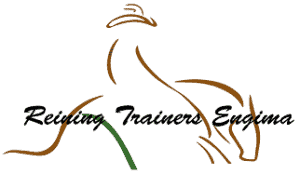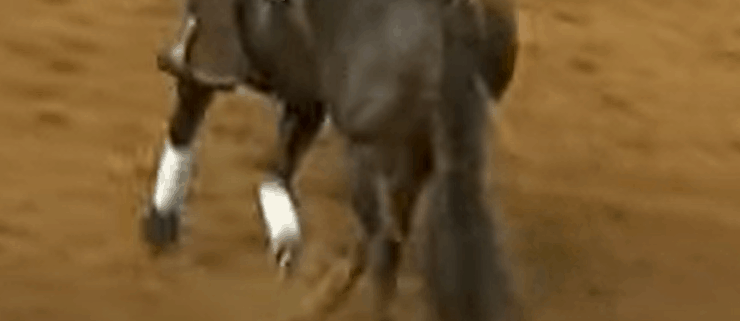The Reining Tail Obsession
The 2020 NRHA Derby did not disappoint with horses showing the quiet reining tail look; achieved through equine suffering.
The quiet reining tail look is a signature of the reining horse, and despite the suffering to the horse, it continues. Judges reward quiet tails; even when it is clear to the public, they have been tampered with! High scoring horses with flat tails hanging like dish rags.
They are so obsessed with the look; members report yearlings presenting at NRHA sales with their tails done!
To achieve, ‘the look’ people knowingly cause harm – including hair loss, permanent nerve or muscle damage or, worst of all, amputation. With some veterinarians becoming more concerned over their reputations for tail blocking, trainers and their assistants step to needle horses’ tails with alcohol or other potions, some finding different solutions to numb the tail. Tourniquets are very popular now. Members report their horses being done without permission!
The horse’s tail serves many purposes:
- Indicator of emotional status
- Assists in temperature regulation
- A protective barrier for the anus and vulva
- An appendage that aids in balancing
- Insect deterrent
With penalties for swishing tails, the motivation to stop it at all costs is high for trainers and show riders.
Horse Tail Anatomy
- There are between 18 and 22 tail vertebrae, which begin where the sacrum ends.
- Muscle and ligament continue to the end of the dock.
- The vertebrae size reduces in diameter from the root of the tail to the tip. The end is pointed.
- Two arteries supply blood to the tail. Circulation is not efficient in this narrow pathway.
Quiet Reining Tails through Tourniquets
The tourniquets are increasing in use as they can seem harmless but if wrapped tightly achieve numbness. Quickly pulled off just before the horse enters the arena it can achieve the quiet reining tail look. BUT:
Too Much Pressure Cuts off Blood/Nerve Supply – The dock is extremely sensitive to pressure. Any wrap applied above the last vertebrae that apply prolonged pressure acts as a tourniquet, which results in loss of blood and nerve supply to the entire dock. Repeatedly wrapping too tightly or too close to the end of the tailbone can cause the whole tail to die.
Read More Articles on This Topic
where did this nrha rule proposal to stop cruelty vanish to
Outlaw tail blocking its pervasive in reining its cheating unethical land the horses suffer
© 2020 Reiningtrainers.com. All Rights Reserved.





The judges should be sacked – the rule makers should be sacked – the trainers should be banned – end of story.
The trainers are the rule makers, the trainers are the judges. The trainers control it all and are all on the board. Talk about incestuous.
Just came across this site – my god what bubble do these ppl live in – are they cousins of those big lick people???
Seems the higher you go in this sport – the more you live in a bubble of what is right and wrong – where are the vets and where is the integrity and humanity.
Nerving a horses tail when done correctly by a Vet and given correct care after does not pose any high risk to the animal. The risk comes when non-veterinarians try to do this procedure themselves because they can’t find a vet to do it. It is no different than having dewclaw removed on dogs. Almost every household dog had had these removed as well as every show dog.
It is illegal for veterinarians to nerve tails so it is always done illegally and by non-veterinarians. Big difference between a dewclaw and a limp tail stopping normal function and spinal balance.